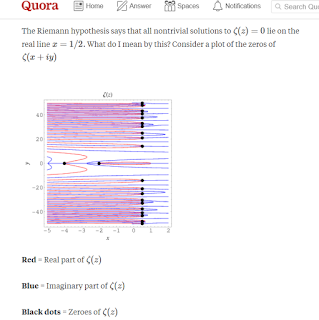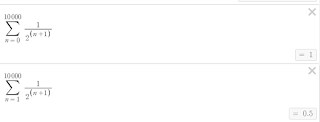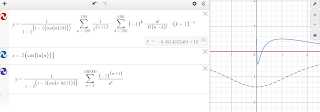When I first learned about the complex plane,
it seemed a bit shocking to find e - the exponential, with
value2.78... - was leading something of a double life. Here
was the Euler identity, e^ipi +1 = 0, which clearly had little
to do with the value of either e or pi.
It is good to keep in mind that complex numbers developed
in the 16th century, as an aid to calculation. Should
you ask what the root(s) to 1^3 are, the answer has to
be 1, -1, -1. Otherwise the situation is confused because
a square root can be + or -. Can -1 have a square root? Yes, it can.
This is where e comes in.
I am putting a link to the Math is Fun page on complex mutiplication
below, but the gist is this: The real and imaginary terms on the
complex plane - cosine and sine of the unit circle - end up, through the
vagaries of computation, playing different roles in complex multiplication.
When expressed in polar form, The real terms are multiplied to reflect magnitude, but
the angles are added and provide the angular movement. Indeed, every multiplication by i
represents a pi/2 counterclockwise shift. Works when an initial expression
is squared, or raised to the n (deMoivre' theorem).
Then in the 18th century, e gets used as the placehoder in the expression
e^i*pi- (e^Re(0)?) - with a shorthand complex exponent which is actually, (a + bi).
Does the presence of e change things? Yes, but in an unexpected way:
e^i gets evaluated as (cos(1) + i*sin(1)), the (understood) 1 being 1 rad.
e^(i*2) becomes (cos(2) + i*sin(2))...One can still identify the ln that
corresponds to that .54030 cos figure ( it is -.6156...) and do e-based
calculations .
(The use of i for (-1)^.5 was Euler's work. He went on to prove that the
square root of negative numbers can be expressed as multiples of i,
(-4)^.5 = 2*i.)
So when does e's value come into play. At e^(i)^2, i squared is -1; so
we are given e^-1, which is .3678. And of course, our (.5 + i) exponent
in the Riemann problen is treated as (e^.5)*(cos(1) + i*sin(1)).
* * *
https://www.mathsisfun.com/algebra/complex-number-multiply.html
http://villemin.gerard.free.fr/Wwwgvmm/Type/ImagComp.htm



















































